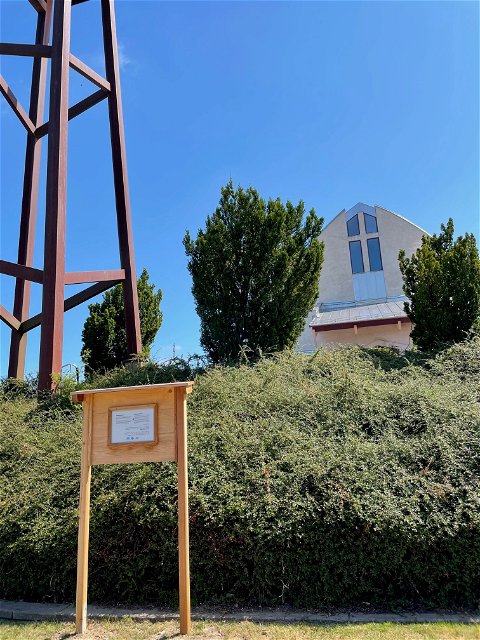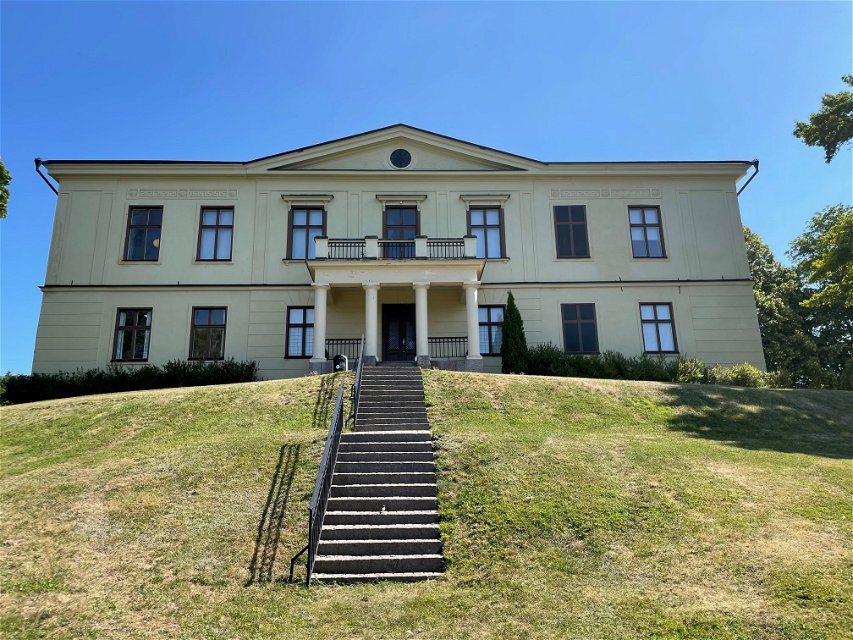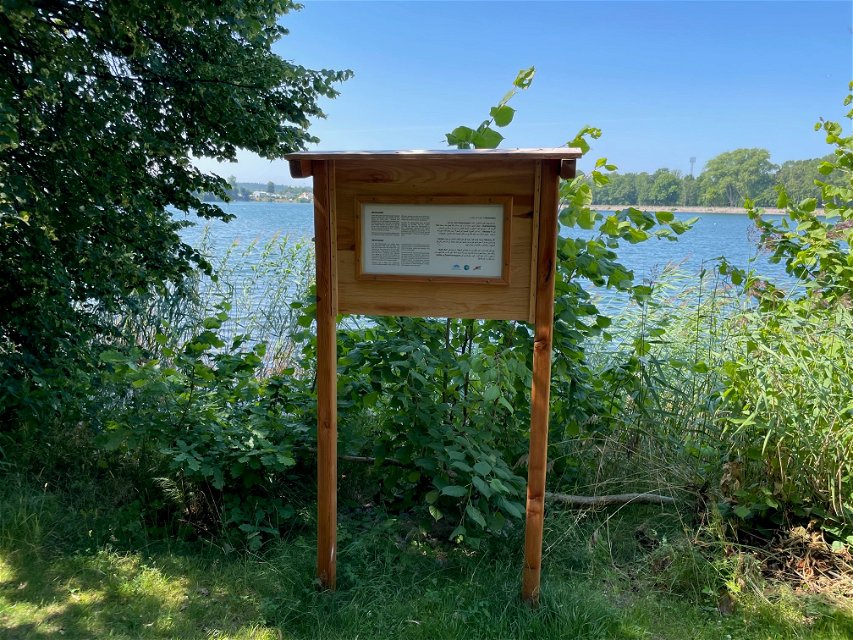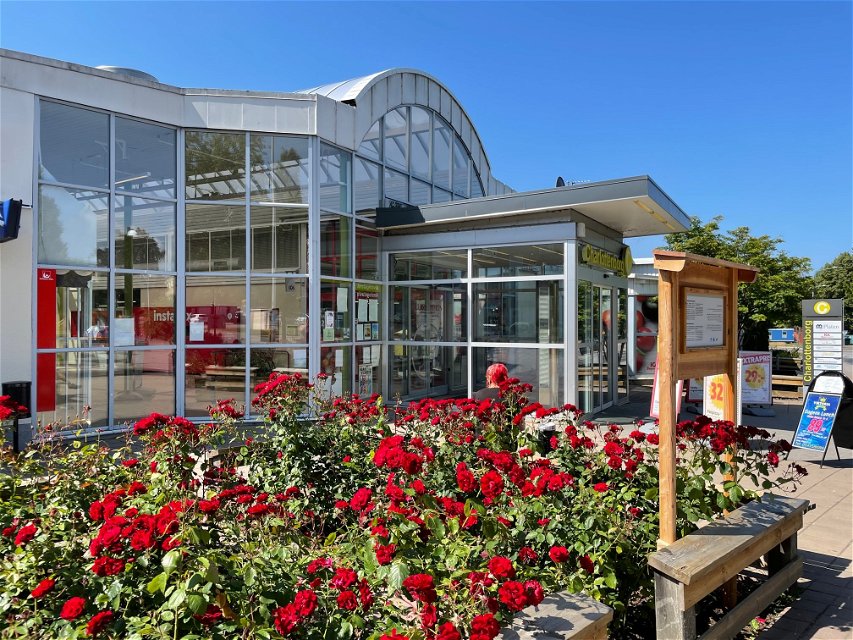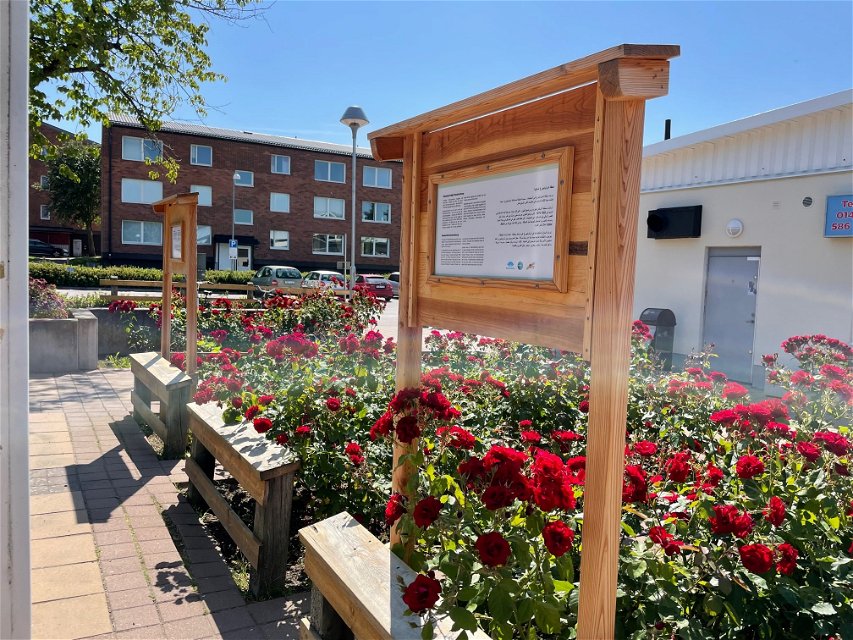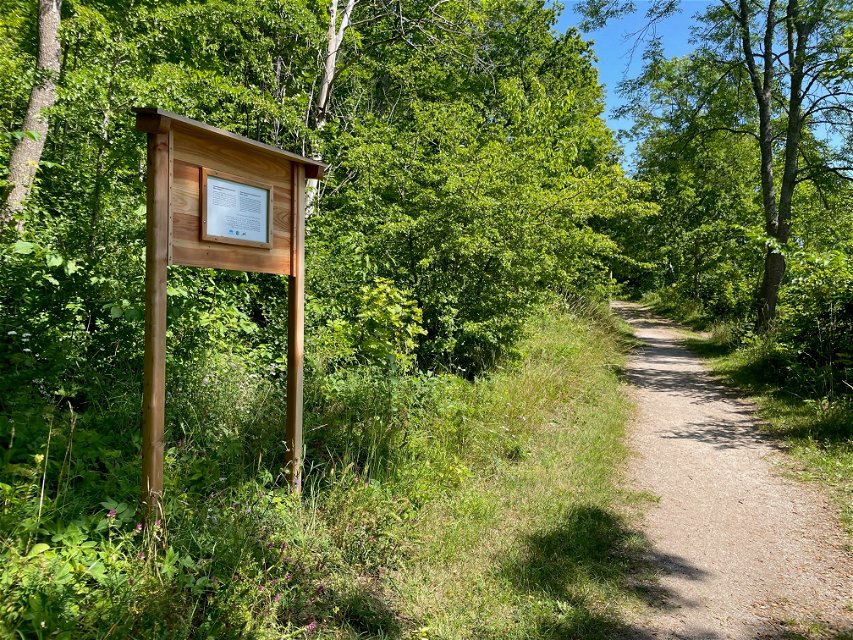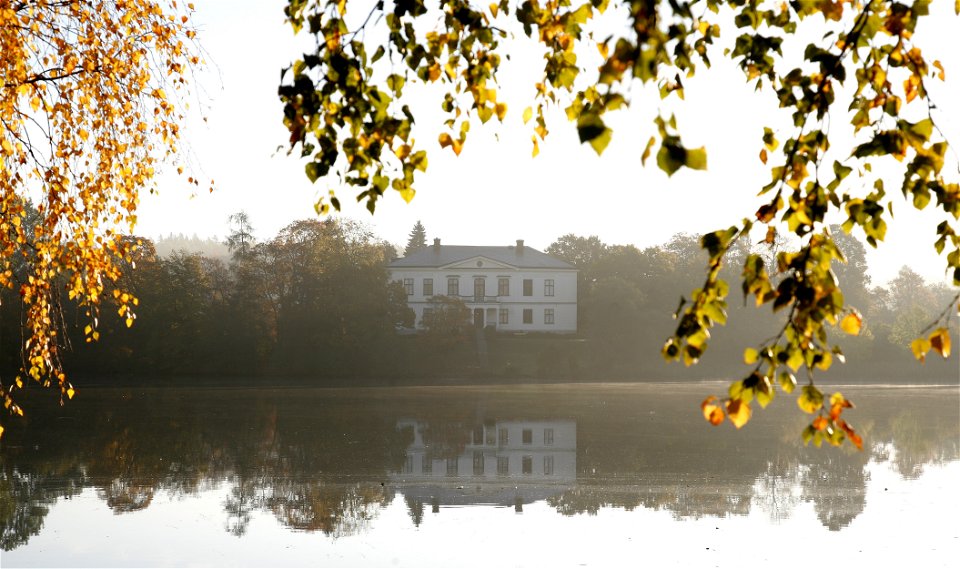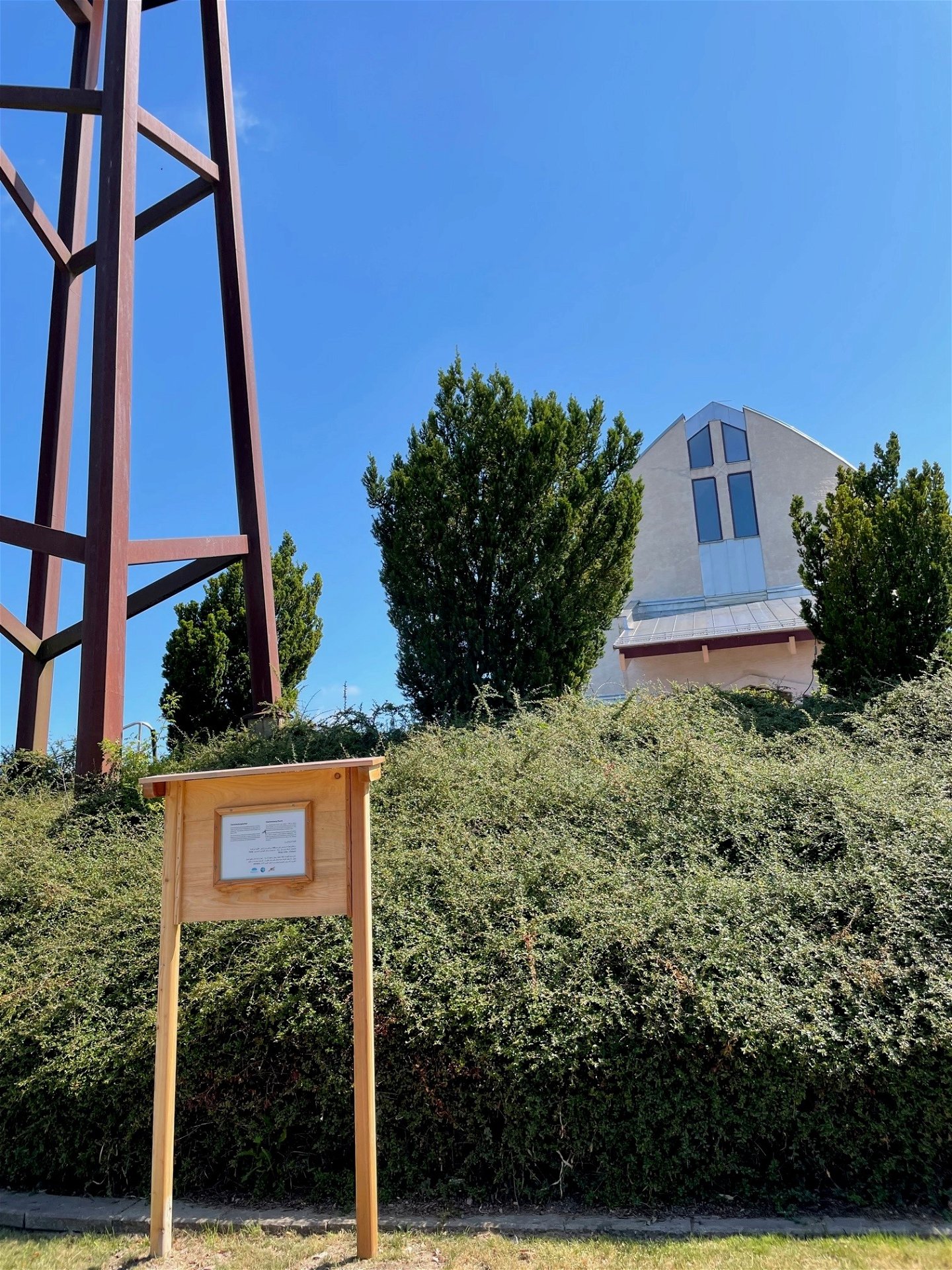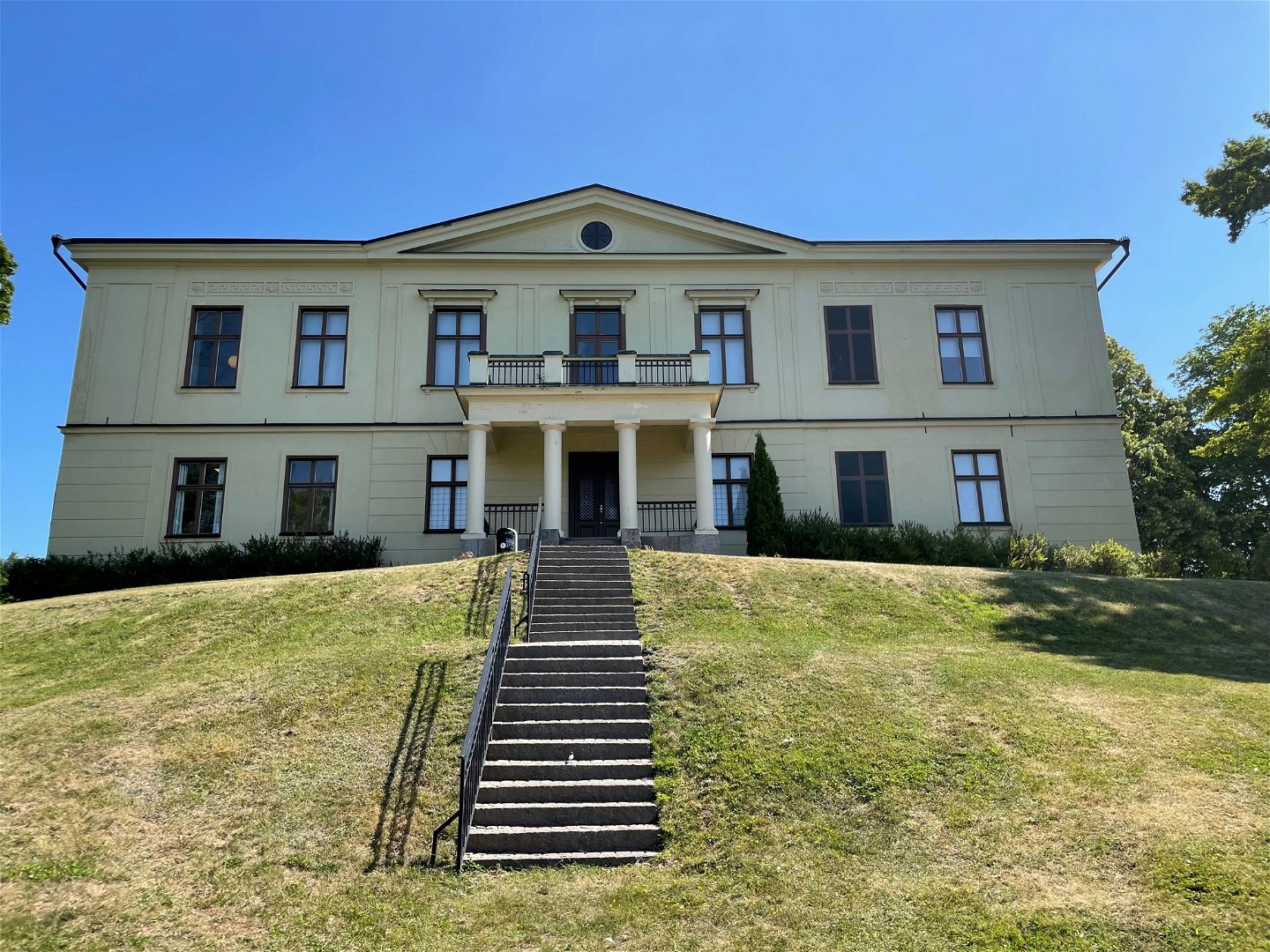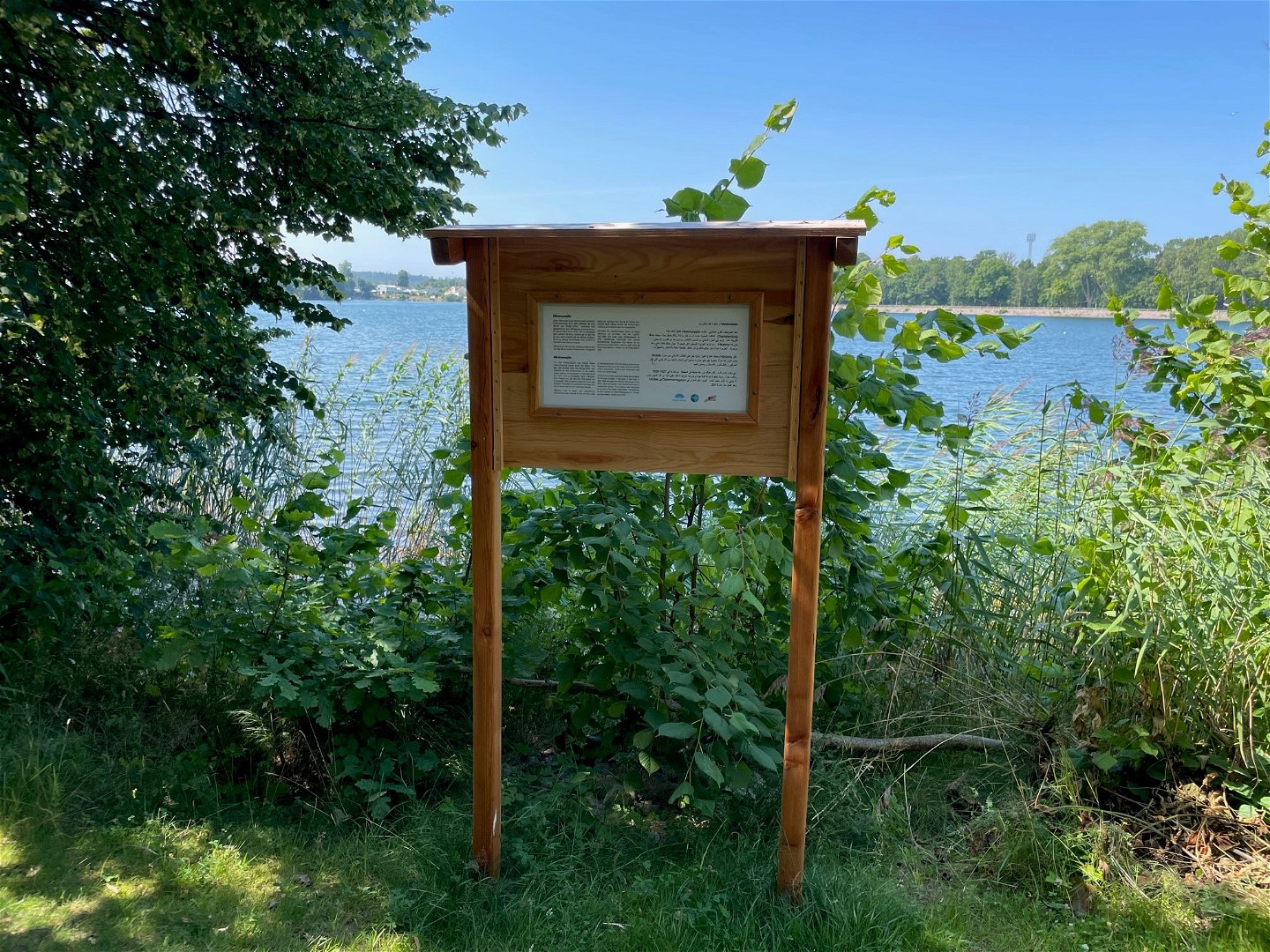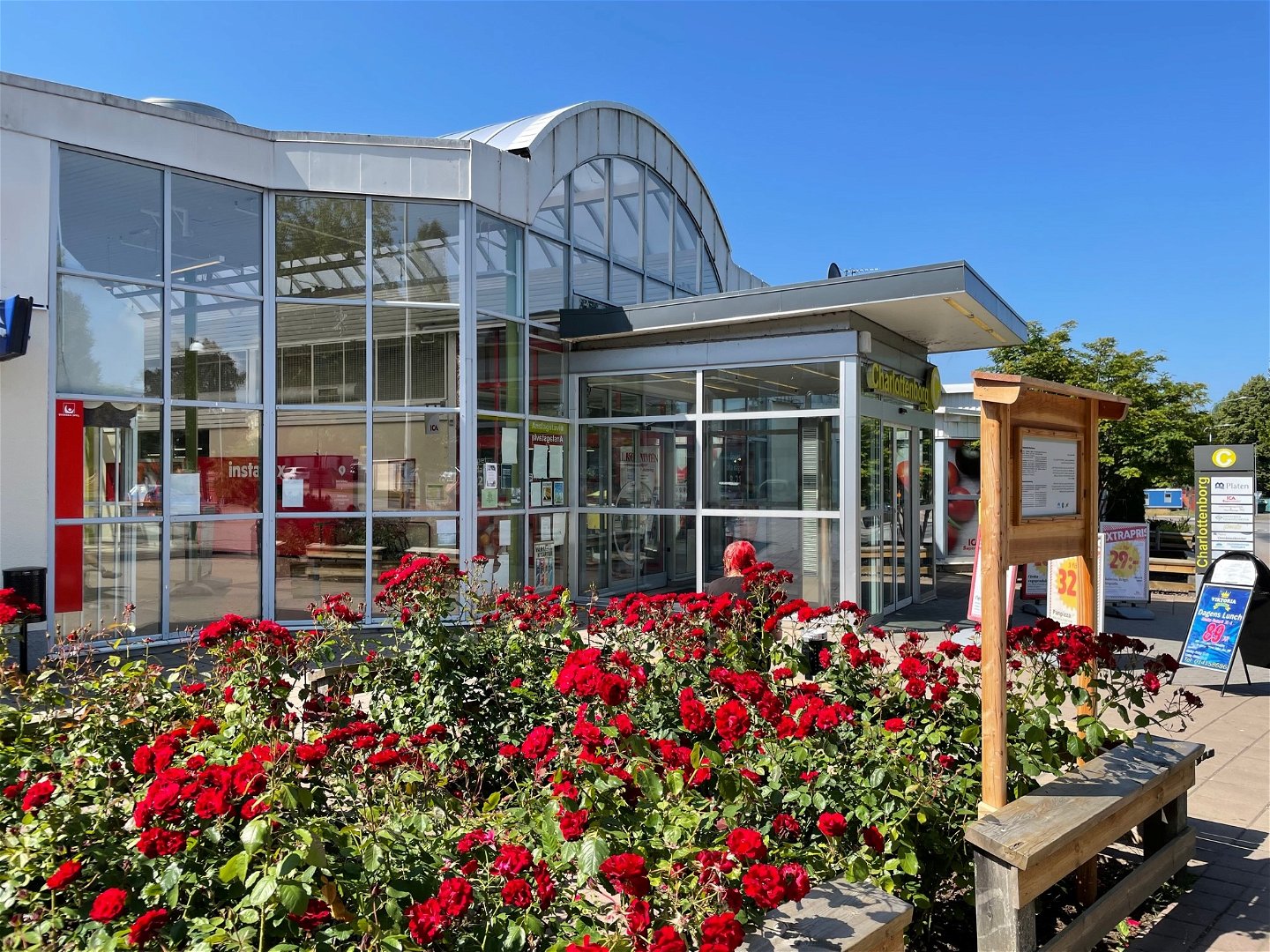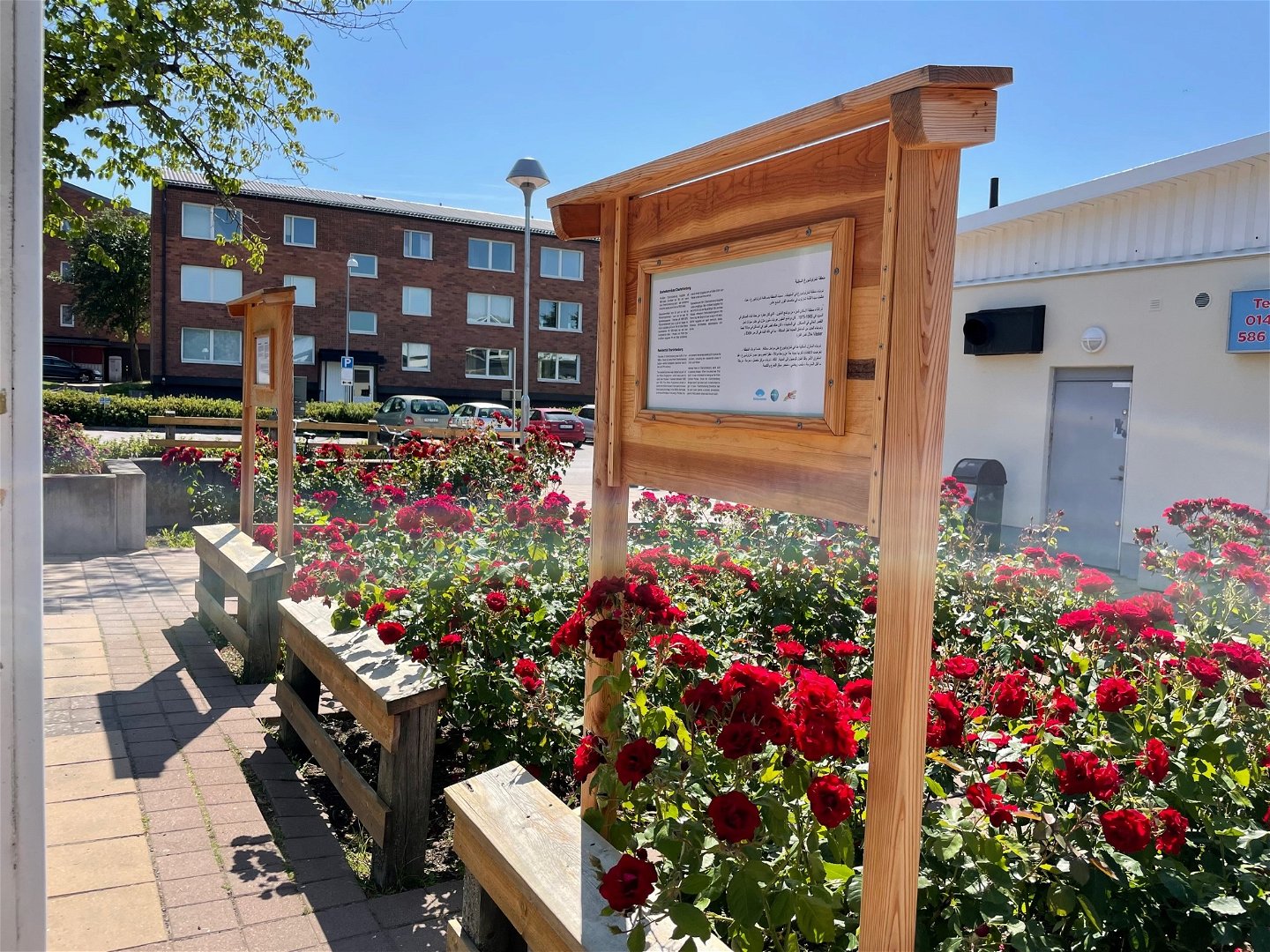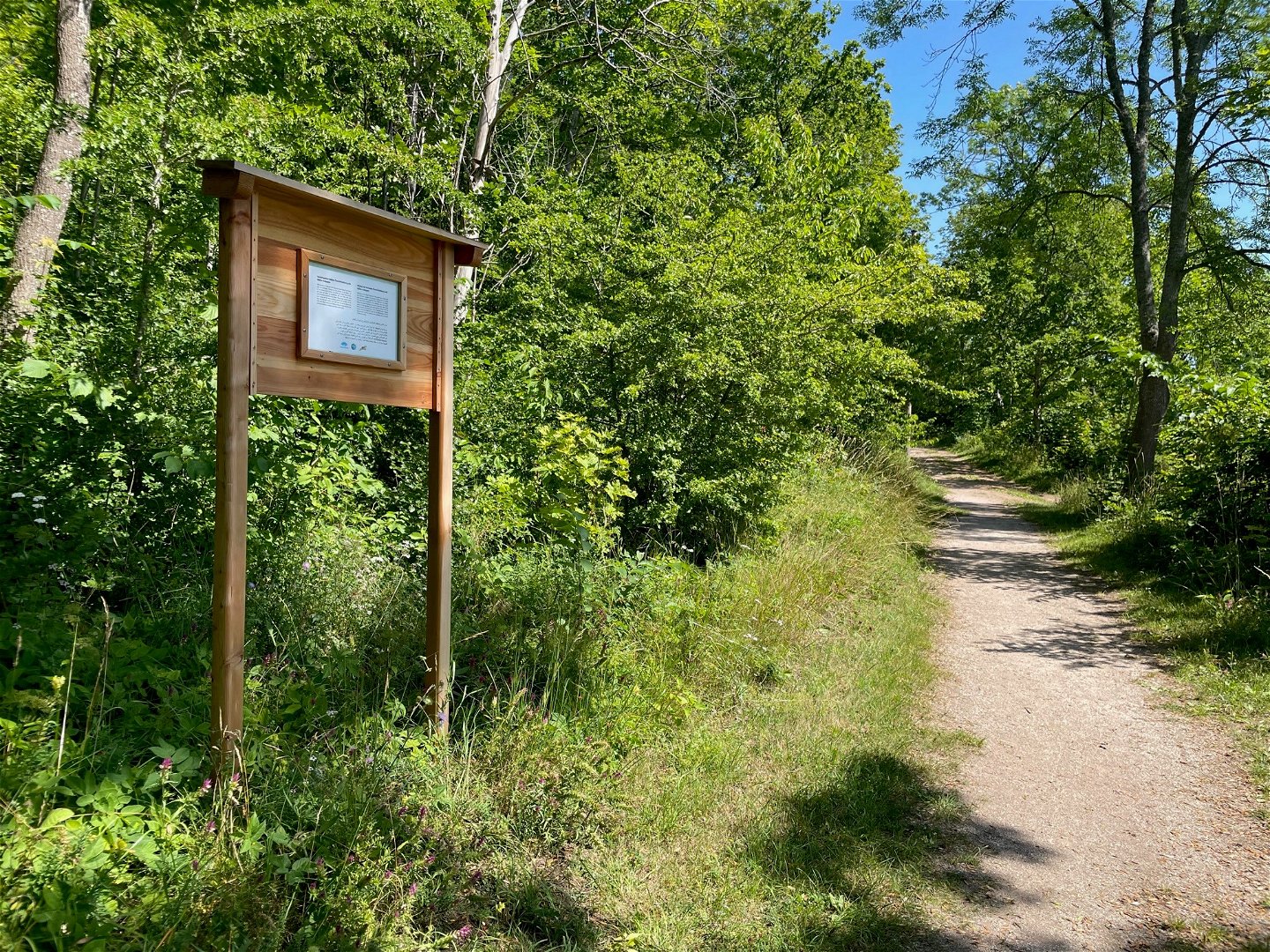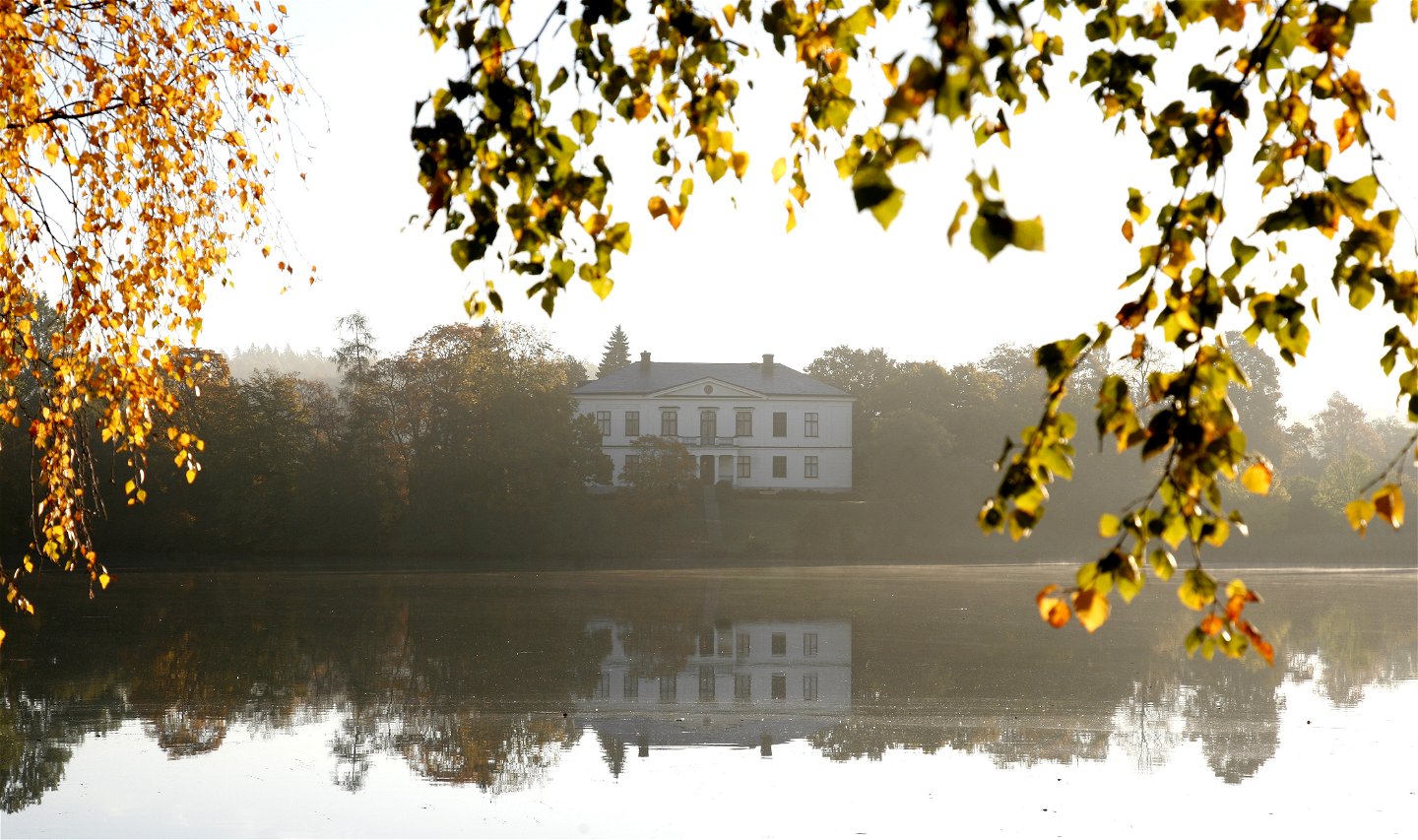Upptäcktspromenad i Charlottenborgsområdet
Promenad
- Landkreis: Östergötlands län
- 6732.16 km von Ihnen entfernt
Details zum Weg
- Länge 5.4 km
Aktionen
Aktuell
The discovery walk is fine to do with prams and wheelchairs pretty much all the way around. It is the paths at the bottom by the water behind Charlottenborg Castle and the hill up to the hiking trail that is difficult to access. Otherwise, the walk is on asphalt and there is a footpath and cycle path.
Beschreibung
Go for a walk and learn more about the Charlottenborg area. There is so much more here than the Charlottenborg residential area. Here we describe some of the things you pass on your walk. The Charlottenborg Church, Charlottenborg castle, Hårtorpssjön (Hårtorps lake), Charlottenborg bridge, central Charlottenborg, Electrolux factory, Residential Charlottenborg and the hiking traill between Charlottenborg och Sjöbo-Knäppan's nature reserve. If you walk yhe circular loop, it is 2.6km. If you add the walk to the Electrolux factory, the walk is 5.1 km. Read more about the places below. Here yotu will find information about places along the way in Arabic.
Charlottenborg Castle was commissioned by Ludwig Weirch Lewenhaupt (1622-1668) and was completed in 1652. Ludwig named the newly built castle after his wife, Charlotte von Hohenlohe-Neuenstein (1626-1666). Charlotte was a German countess whom Ludwig had met in Germany and the couple had eight children together. After his parents died, Charlottenborg Castle passed to their son Adam Lewenhaupt (1659-1718). He was an officer in Karl XII’s army but was captured by the Russian army and died in a Russian PoW camp. In the mid-18th Century, Charlottenborg Castle was owned by Carl Gustaf Boije of Gennäs. He had large water tanks installed on the castle’s third floor to breed carp. One cold winter, the tanks froze and broke, resulting in a large flood. In 1790, the castle was sold to Israel Lagerfelt. It was in a very bad condition at this time and Lagerfelt commissioned major renovations. In the 1890s, the artist Carl-Erik Törner created several murals in the house that are still on display today. In 1959, Charlottenborg Castle and its land was bought by Motala Municipality. It was a private residence until 1981. In 1984, the Motala Museum and Regional Association opened the Motala Museum in the castle. They ran the museum until 2016 when the Cultural Department of Motala Municipality took over. Today, the museum displays exhibitions showing the history of Motala.
**Hårtorpssjön (hårtorps lake) **The Hårstorpssjön has flowed below Charlottenborg Castle since the 1920s. The lake was formed when the Motala River was dammed for the construction of the nearby power station. At the bottom of the lake there are ruins from a mediaeval farm: Hårstorp farm. Maybe you can see the little island out in the lake? That’s roughly where the farm was located. The island is a protected heritage site that is now covered with trees and bushes. Hårstorp was a large and magnificent commercial area located on the northern side of the Motala River. The farm had a stone house located on a hill out in the water and many areas where craftsmen, millers and fisherman had their own enterprises. At the time the dam was built, there was a newer farmhouse located in the area. It was built in 1827-1828 and was the official residence of the Göta canal company’s chamberlain and later a residential school. The building was relocated so as not to find itself underwater. The building is now located on Östermalmsgatan in Motala and has been a hotel since 2013.
**Charlottenborg Bridge **Soon after its construction, the area of Charlottenborg was criticised for its location, cut off as it was from the rest of Motala by the Motala River and Göta Canal. The solution was to build the Charlottenborg Road with a bridge over the canal and the river. It took nearly 20 years for the bridge to become a reality and the idea for a longer Charlottenborg Road was never realised.
**Central Charlottenborg **Once the residential area of Charlottenborg had been built in the 1960s, there was soon a need for its own town centre. The Charlottenborg Bridge hadn’t been built yet and so those who lived here had to go a long way to get to Motala. The area therefore needed its own town centre, with shops and other amenities. Central Charlottenborg was built around 1987 but destroyed in a fire in 1998. The entire shopping centre was heavily damaged by the fire and had to be rebuilt from scratch. The new business centre was opened in 1999.
Residential Charlottenborg The area of Charlottenborg was built in the 1960s. It took its name from Charlottenborg Castle – where Chatelaine Charlotte lived in the mid-17th century. The residential area was created as part of the Million Programme – which was a plan to build new houses in Sweden between 1965 and 1975. The Million Programme aimed to build one million houses in ten years to solve the housing shortage. In the 1960s, there was a serious shortage of housing in Motala, too, and several new areas were built to solve the problem, including the residential areas in Ekön and Väster. Homes here in Charlottenborg were built in several phases. When the area was first built, it was criticised for being so far from Central Motala. Since the Charlottenborg Bridge hadn’t yet been built it took longer to get to town. Charlottenborg therefore had its own town centre, a school, pre-school, sports field, slalom slope and church built.
Hiking trail between Charlottenborg and Sjöbo-Knäppan Welcome to the Great Outdoors! Here you’ll find a hiking trail that feels like a secret. The feeling of getting out into nature and entering another world will hit you after just a few steps. The trail heads up the hill to the barbecue area where you’ll follow the yellow markings attached to the trees. Walk along paths, through pastures and forests and get to know nature in all its seasons. The full loop is 2 km. Those who want a slightly longer route can follow the signs for the Sjöboknäppan nature reserve after 1 km for a bathing area, barbecue area and loads of different paths
**Electrolux factory **Electrolux began manufacturing fridges back in 1925 and was the first company in the world to put household fridges into serial production. The large Electrolux factory started operations in 1968 and Electrolux focused its manufacture of stoves on Motala. After two years, the factory was expanded. Later, the area was abuzz with activity as Holms Industri also set up shop here. The area become one of Motala’s largest industrial areas and a place where many of Motala’s residents worked.
**Charlottenborg Church **The Charlottenborg Church was opened in 1988 by Bishop Martin Lönnebo. The church acts as a district church for those parts of the city that lie to the south of the Motala River. It was designed by architects Gösta Eriksson and Bengt Linder. The church can hold 180 people and has a height of 13 metres. The walls are sloped to create beautiful reverberation. This makes the space particularly well suited to choral singing. The floor is Öland limestone and the font is made of red Jämtland limestone.
Aktivitäten und Einrichtungen
-
Wandern
-
Promenad
-
Rundslinga
-
Kulturstig
Zugänglichkeit
-
Nähe eines Parkplatzes
-
Nähe von Nahverkehr
-
Nähe einer Toilette
-
Kinderwagen zugänglich
-
Rollstuhlgerecht
Parking
A tip is to park at Charlottenborg Castle and at the parking lot below the hiking trail.
Anleitung
From Linköping/Borensberg road 34 continue into Motala on Östermalmsgatan after two roundabouts, turn left at the sign for Charlottenborg via the Charlottenborg bridge.
From Vadstena, continue in to Motala and turn right at the traffic lights to Strandvägen. Charlottenborg's church is at the end of Strandvägen on the right and Charlottenborg's castle shortly after on the left.
From old Linköpingsvägen turn right in to Vickerkullavägen which leads to the Charlottenborg area. At the traffic lights you have Charlottenborg Church and Charlottenborg Castle aon the left and the rest of the area on the right.
From national highway 50 from Norr (Örebrohållet) take a left at the large roundabout you meet on the way in to motala in to Metallvägen, continue to the traffic lights where you turn right in to Östermalmsgatan, after two roundabouts take left at the sign for Charlottenborg via Charlottenborgsbridge.
There is a local bus to Charlottenborg.
Kontakt
Adresse
Kontakta mig om du har frågor om Motalas Naturkarta.
E-Mail-Adresse
Hilda-Linn Berglund
Logotyp der Organisation

Bitte beachten Sie, dass einige dieser Texte automatisch übersetzt worden sind.
Fragen & Antworten
Stellen Sie eine Frage an andere Naturkartan-Nutzer.

